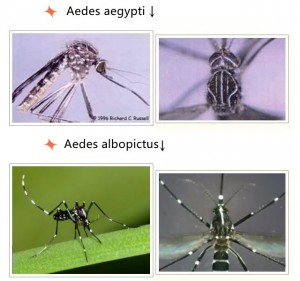Introduction
With climate change and increased global travel, dengue fever has become one of the world’s fastest-spreading mosquito-borne diseases. According to the World Health Organization (WHO), approximately 390 million people are infected annually, with 500,000 severe cases leading to tens of thousands of deaths. Southern China has entered peak dengue season, prompting health authorities to urge public vigilance. This article provides a comprehensive guide to dengue’s transmission, symptoms, prevention, and the latest control measures.
1. Global Trends & Transmission
1.1 Current Outbreaks Worldwide
Dengue is endemic in tropical and subtropical regions, with severe outbreaks in Southeast Asia (Thailand, Philippines), Latin America (Brazil, Mexico), and the Western Pacific. Due to urbanization and climate change, Europe and North America now report local transmissions.
1.2 How Dengue Spreads
The virus is transmitted by Aedes aegypti and Aedes albopictus mosquitoes (“tiger mosquitoes”), which:
- Bite during daytime (peak: 2 hours after sunrise/before sunset)
- Breed in stagnant water (flower pots, tires, bottles)
- Pass the virus to offspring, complicating eradication
2. Symptoms & Diagnosis
2.1 Clinical Stages: Mild to Severe
Incubation: 3–14 days. Symptoms progress in phases:
A) Dengue Fever (DF)
- High fever (39–40°C) for 2–7 days
- “Three pains”: Headache, eye pain, muscle/joint pain
- Rash (appears days 3–5, measles-like)
- Nausea, vomiting, swollen lymph nodes
B) Severe Dengue (DHF/DSS)
~5% of cases escalate to dengue hemorrhagic fever (DHF) or dengue shock syndrome (DSS), marked by:
- Severe abdominal pain
- Persistent vomiting (may contain blood)
- Bleeding gums/nose
- Plummeting blood pressure, confusion (requires ICU)
2.2 Dengue vs. Common Cold: Key Differences
| Symptom | Dengue Fever | Common Cold |
|---|---|---|
| Fever | Sudden high fever (39°C+) | Low-grade (≤38°C) |
| Pain | Severe headache/muscle ache | Mild headache/congestion |
| Rash | Common (red spots) | Rare |
| Duration | 5–7 days, may worsen | Resolves in 3–5 days |
3. Prevention: Personal, Household & Community Actions
3.1 Personal Protection
✅ Outdoors:
- Wear light-colored long sleeves (dark colors attract mosquitos)
- Apply EPA-approved repellents (DEET/picaridin)
- Avoid dawn/dusk outdoor activities near bushes/ponds
✅ Indoors:
- Install window screens/bed nets
- Use electric mosquito traps
- Set AC to <24°C (reduces mosquito activity)
3.2 Eliminate Mosquito Breeding Sites
“No stagnant water = No mosquitoes”—target:
- Indoors: Vases, water tanks, refrigerator drip trays
- Outdoors: Tires, bottles, tree holes, clogged drains
- Tip: Change water weekly or use larvicides (e.g., Bti)
3.3 Community Efforts
- Health departments: Mosquito surveillance/fogging
- Neighborhoods: Organize clean-up drives
- Hospitals: Enhance screening to prevent misdiagnosis
4. Treatment & Misconceptions
4.1 Management Guidelines
- Fever relief: Acetaminophen (paracetamol) OK; avoid ibuprofen/aspirin (bleeding risk)
- Hydration: Oral rehydration solutions (ORS)
- Severe cases: Hospitalize for platelet/BP monitoring
4.2 Debunking Myths
❌ “You can’t get dengue twice” → 4 serotypes mean reinfection is possible
❌ “Any fever reducer works” → Wrong meds can be deadly
❌ “Only rural areas are at risk” → Urban containers pose equal threats
5. Latest Updates: Vaccines & Global Strategies
5.1 Vaccine Progress
Two vaccines available (limited use):
- Dengvaxia (Sanofi): For ages 9–45 with prior infection
- Qdenga (Takeda): Approved in EU (2023) for ages 4+
5.2 China’s Policies
- Reporting: Mandatory within 24 hours of suspected cases
- Outbreak response: Emergency mosquito fogging
- Public education: Community campaigns & media outreach
Conclusion: Collective Defense Saves Lives
Dengue is preventable through early detection, accurate diagnosis, and mosquito control. High-risk groups (e.g., travelers to Southeast Asia) should stay alert. Seek immediate care if symptoms appear.
We baysene Medical have Dengue Ns1Test,Dengue NS1/IgG/IgM combo test, Dengue IgG/IgM rapid stest Here We baysen meidcal always focus on diagnostic techniques to improve quality of live .
Post time: Apr-02-2025

